Role of CFD Analysis in Optimizing Data Centre Performance
The data center sector is undergoing a significant transformation, fueled by the rising demand for high-performance computing (HPC) and artificial intelligence (AI) applications, which is pushing computing densities to new heights.
This escalation in power density greatly amplifies the cooling demands necessary to avert overheating and potential downtime. In response to these challenges, data centers are increasingly adopting hybrid cooling systems that integrate traditional air cooling with liquid cooling, proving to be an effective approach for managing these heightened thermal loads.
Hybrid cooling solutions enable data center operators to manage these elevated temperatures without the need for complete retrofitting of current facilities, facilitating a gradual and cost-efficient method for incorporating liquid cooling tailored to specific high-heat applications.
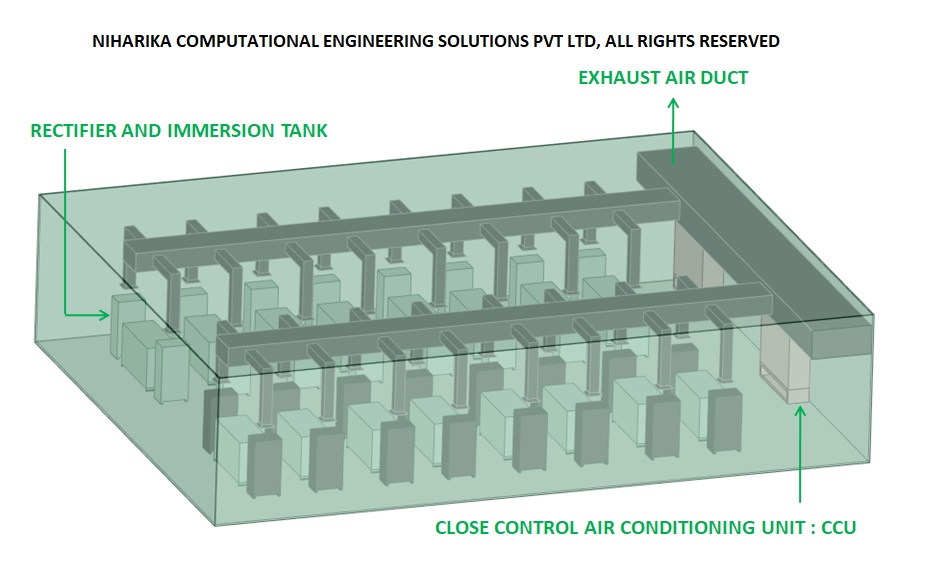
Objective of conducting CFD analysis for Immersion cooled data center
Our Client manages a diverse portfolio of innovative IT companies operating in 70 countries across Europe, the Middle East, and Africa. They provide a range of services including managed IT services and consultancy, system integration, cloud and data center solutions, software and hardware offerings, as well as technology distribution.
Scope of this contract is to create a 3D CAD model in accordance with the requirements of computational fluid dynamics (CFD) analysis, develop an appropriate CFD mesh, and carry out a thorough CFD analysis for a hybrid-cooled data center featuring 16 close control air conditioning units (CCUs), including two backup units. The CFD analysis was performed using five distinct redundancy configurations, and a detailed CFD analysis report, encompassing observations, conclusions, and recommendations, was provided as the final output.
CFD analysis results
Maintaining efficient airflow in data center racks is crucial for ensuring optimal equipment performance and extending the lifespan of servers. Within the current data center, there are a total of 18 CCU units, with 2 of them serving as redundant units. These 16 CCU units work together to distribute the airflow across 16 rows of racks. Through CFD analysis, we have examined various combinations of CCU operation, and the results indicate that the air flow within the data center is deemed satisfactory.
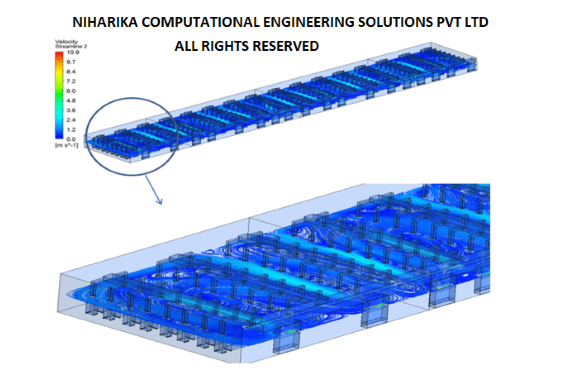
CFD Results: Temperature in the data center
Through CFD analysis, we have examined various combinations of CCU operation, and the results indicate that the air flow within the data center is deemed satisfactory and maximum temperature within the data center unit is 29 Degree Celsius. Hence it was concluded that the proposed cooling design is adequate.
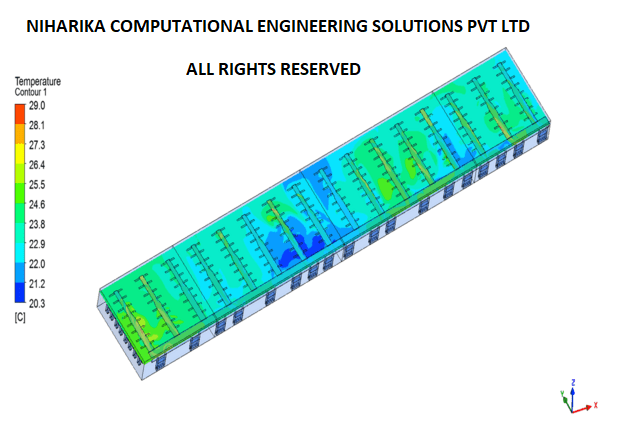
Conclusions drawn from CFD analysis
The results of the CFD analysis indicate that the cooling system implemented for this data centre is adequate, and there is a sufficient level of redundancy in place.
We Got More
Go through All Our Case Studies
CFD analysis for General Electric data center,Bihar,India
Computational Fluid Dynamics (CFD) analysis is extensively used in data center projects to study the flow development and temperature field and identify the thermal hot spots in the projects design stage. CFD analysis results enable the thermal designer to make well-informed decisions in the design stage and eliminate all the uncertainties that may affect the electronic equipment mounted in the racks. We carried out CFD analysis for the large data center under construction in the Bihar state of India by Shapoorji and Pallonji EPC company, one of the largest EPC Companies in India. Our CFD analysis results have enabled our customers to optimize the air-cooling system and ultimately to realize an efficient, safer, and effective data center cooling mechanism. Read More
CFD analysis of Modular Data Center
Prefabricated modular data centers, often referred to as integrated modular solutions or containerized data centers, are designed to cater to specific business needs, providing a tailored and secure infrastructure that differs from conventional brick-and-mortar designs. Read More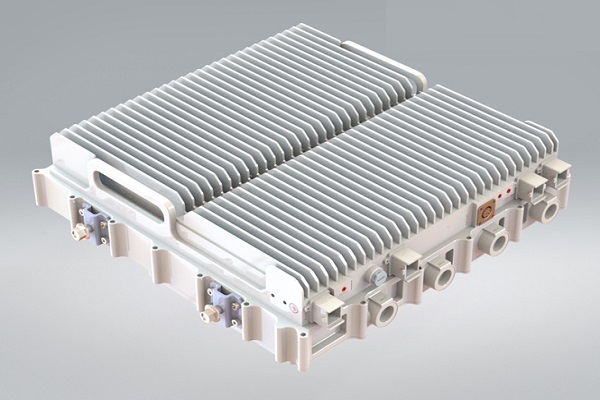
CFD analysis of Multi Band Remote Radio Unit
The advent of 5G technology has brought about unprecedented advancements in wireless communications, enabling faster speeds, lower latency, and increased capacity. These advancements are associated with higher power consumption and increased heat generation in the 5G Remote Radio units.Increasing data rates and network densification require radio units to process larger volumes of data, leading to higher power consumption and heat generation. Environmental factors such as ambient temperature, humidity, and exposure to direct sunlight also impact the thermal aspects of the radio units. Read More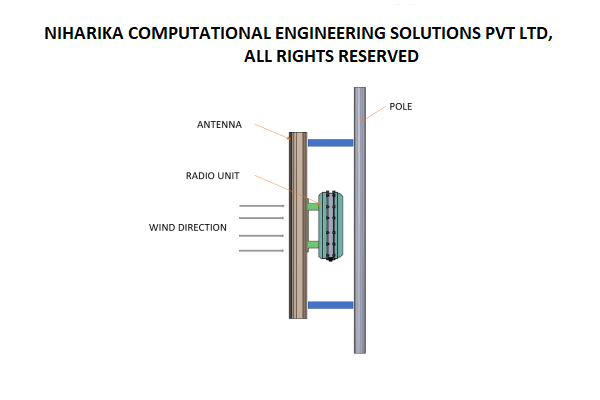
Wind Load analysis for multiband 5G Remote Radio Unit with Antenna using CFD
The seamless operation of base station antennas is of utmost importance for efficient and reliable communication networks. However, these antennas are constantly exposed to various environmental factors that can affect their performance and structural stability. Among these factors, wind load plays a significant role. Read MoreDEVELOPMENT OF COOLING SOLUTION FOR GaN RF POWER AMPLIFIER
The demand for high-power and efficient radio frequency (RF) power amplifiers has been steadily increasing across various industries, including wireless communications, radar systems, and satellite communication. GaN (Gallium Nitride) technology has emerged as a game-changer in RF power amplification due to its exceptional performance characteristics and advantages over traditional technologies. GaN technology offers higher power density, improved efficiency, and wide bandwidth capability, setting it apart from traditional technologies like GaAs (Gallium Arsenide) or SiC (Silicon Carbide). Read More


